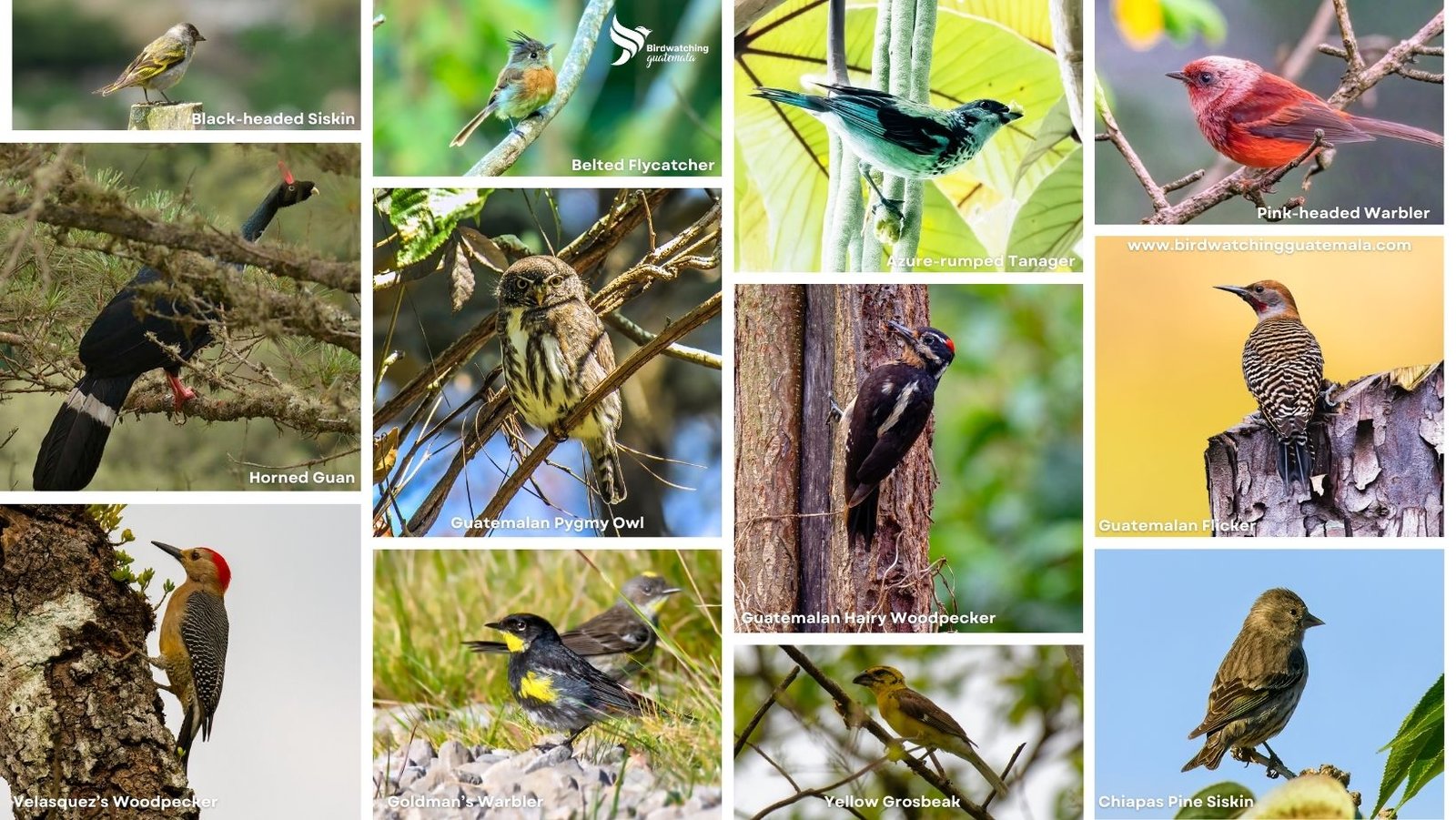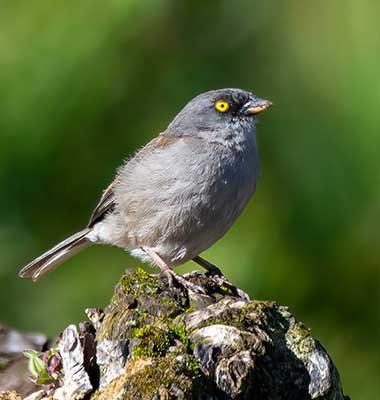
Unveiling Guatemala’s Birdlife in Endemic Regional Areas
Guatemala, a central piece of the Mesoamerican biological corridor, is situated in the extreme north of Central America. Its strategic location is blessed with diverse geographical zones, offering unique habitats to an array of endemic bird species.
This biological paradise of 108,889 km2 is distinguished into four main regions, each offering a unique canvas of biodiversity and housing a plethora of bird species. The regions include:
- The highlands of northern Central America
- The tropical savannas of the northern Pacific slope of Central America
- The tropical rainforest on the Caribbean slope of Central America
- The lowlands of the Yucatan Peninsula
Join us in this exploratory journey as we uncover the vivid spectrum of birdlife nestled in the heart of these endemic regional areas of Guatemala.

Talk To A Travel Advisor
GT: (502) 7832 2742
US: (305) 395 3935
Guatemala Birds: Facts, Habitats, Species
Guatemala Birds Endemic Regional Areas
Diverse Bird Life of Guatemala
Guatemala is a birdwatcher’s paradise, boasting a vibrant array of 766 bird species spread across 83 families and 427 genera. At least 35 species of these birds are geographically confined to the regions encompassing southern Mexico, Guatemala, El Salvador, and Honduras. These species are predominantly found in two significant Endemic Bird Areas: the North American Pacific Slope and the North American Highlands.
Almost Endemic Birds of Guatemala
Five bird species, nearly exclusive to Guatemala and the Mexican state of Chiapas, reflect the country’s unique biodiversity. The Azure-rumped Tanager, the representative bird of the North Pacific slope of Central America, is a prime example. Other highland inhabitants include the Horned Guan, Belted Flycatcher, Pink-headed Warbler, and Black-capped Siskin.
Two Groups of Unique Bird Subspecies
Specific bird subspecies, recognized as distinct species by some ornithologists, divide into two primary groups. The first group consists of a wide range of Neotropic birds, unable to reproduce with distant groups. This group includes the Guatemalan Flicker (Northern Flicker), Guatemalan Pygmy-Owl (Northern Pygmy-Owl), Guatemalan Hairy Woodpecker (Hairy Woodpecker), Velasquez’s Woodpecker (Golden-fronted Woodpecker), Golden Grosbeak (Yellow Grosbeak), and Chiapas Pine Siskin (Pine Goldfinch).
Migratory Species with Resident Breeding Population
The second group features migratory species that find a resident breeding population in Guatemala. Due to their inability to breed with overwintering species, these birds display genetic drift in different directions, making them distinctly unique. Two such species are Goldman’s Warbler from Yellow-rumped Warbler and White-breasted Hawk from Sharp-shinned Hawk.
A New Endemic Bird from Guatemala
Recent mitochondrial DNA research from 2006 revealed that Goldman’s warbler is not a subspecies of the Yellow-rumped Warbler but a species on its own, thereby adding a new endemic bird from Guatemala recognized by the International Ornithological Committee (IOC).
Guatemala Endemic Regional Bird Areas by region
As one of the best Central American birding destinations, the country has great diversity with a high degree of regional endemism distributed in four main zones. The blend of these four areas in such a small region creates a desirable offer for bird watchers by adding archaeological and cultural attractions that complement bird watching.
The highlands of northern Central America
Comprises parts of Oaxaca and Chiapas (Mexico), Guatemala, Honduras, El Salvador and Nicaragua. Some species that are endemic to these regions are the Horned Guan (Oreophasis derbianus), the Pink-headed Warbler (Ergaticus versicolor), and the Cabanis’ Tanager (Tangara l. Larvata).
The tropical savannas of the northern Pacific slope of Central America
Cover parts of Chiapas (Mexico), Guatemala, El Salvador, Honduras, and Nicaragua along the Pacific coast. Among the endemic species, we can mention the Yellow-naped Parrot (Amazona auropalliata), the American green Parakeet (Aratinga strenua), and the White-throated Magpie-jay (calocitta formmosa).
The tropical rainforest on the Caribbean slope of Central America
Lies mainly in Honduras, Nicaragua, and Costa Rica. Still, it also includes the northwestern part of Guatemala (Izabal), extending to Panama along the Caribbean coast.
In Guatemala, this region represents a high diversity (more than 500 species) and specialties such as the Wedged-tailed Sabrewing (Campylopterus curvipennis), Keel-billed Motmot (Electron carinatum), and Gray-headed Piprites (Pipritis griseiceps), among others
The lowlands of the Yucatan Peninsula
Includes the states of Yucatan, Campeche, and Quintana Roo in Mexico, and northern parts of the department of Peten (Guatemala) and northern Belize.
Containing species such as Ocellated Turkey (Meleagris ocellata), the Grey-throated Chat (Granatellus sallael), and the Rose-throated Tanager (Piranga roseogularis).
Birdwatching in Guatemala
Here we present ideas of itineraries that can be booked as they are or that can be easily customized to meet your expectations
Inside Rainforest
We will visit Guatemala’s lowlands including two of the best destinations located within the Peten province (Tropical Rainforest) Tikal and Las Guacamayas Station.
Guatemala Endemics
This tour is a mixture of the best destinations in Guatemala including the best locations to appreciate ecosystems that inhabit endemic bird species.
Highlands & Mayan World
We will visit the colorful destinations within Guatemala’s highlands and Peten province in Guatemala’s lowlands. Destinations that inhabit exciting bird species.







